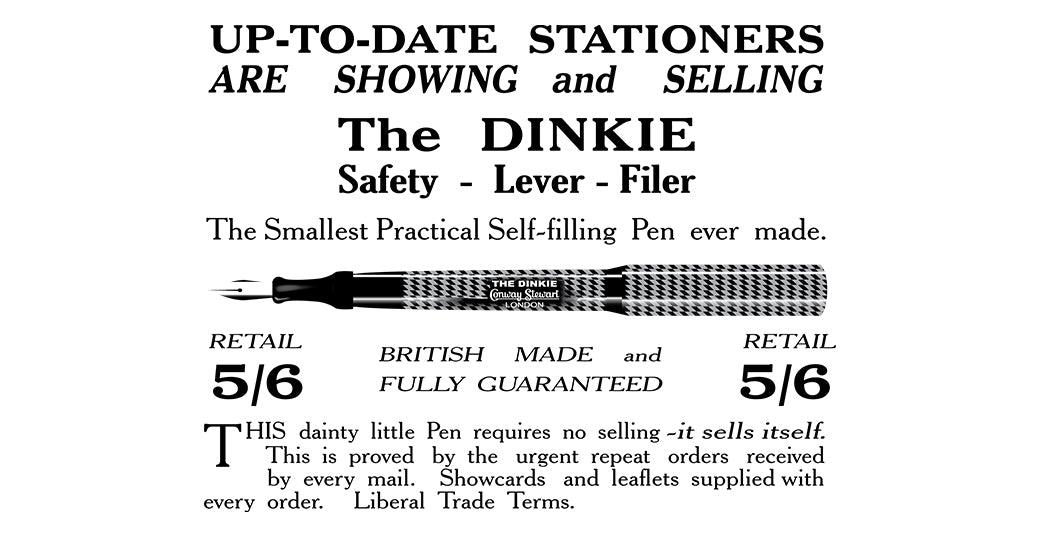Small pens have their own signature features – from ones that have normal-sized nibs with a reduced barrel and cap, to pens that are impossibly tiny, such as the Waterman No. 000 (known by collectors as the smallest pen in the world or the ‘Doll Pen’). However, the most proportionate in every respect, the Conway Stewart Dinkie Pen, is the most successful.
A miniature, yet practical fountain pen, the Dinkie is one of our most enduring pens ever made. Immensely popular upon release in the early 1920s, the Dinkie remained so for the 50 years it was produced. So how did the development of this great pen come about?
Speedy Phil Fountain Pen
To understand the history and development of the Dinkie Pen, it is important first to turn to Speedy Phil – a lever self-filling fountain pen launched in October 1920, that used a particularly delicate, yet effective, lever-wire-hinge system. Speedy Phil was the first all-British lever-filler, a design so popular that it continued to be used in fountain pens for the next 45 years. The success of Speedy Phil led to the creation of a family of fountain pens including ‘safety’, ‘regular’ and ‘screw cap’ – and soon after, the Dinkie Pen.

The Launch of the Dinkie Pen
Launched in 1922, the Dinkie Pen was advertised as “the smallest practical fountain pen ever made”. The Dinkie was a miniature version of Speedy Phill, featuring the same twist-type filling mechanism in a shorter, straight-end lever. Originally released only in chased black vulcanite and without a model number, this pocket-sized pen quickly gained popularity with the British public.
The Dinkie Pen in Colour
It wasn’t until March 1924 that the Dinkie Pen was released in an exquisite range of colours. By this time, Conway Stewart had relocated to our new, much larger factory in Shoe Lane, EC4, providing room for the volume production of the Dinkie Pen in Casein.
Dinkie Type 1 Models
courtesy of "Fountain Pens for The Million page 41" by Stephen Hull
Over the next 50 years, Dinkies with varying ‘mounts’, styles and colours became available. A myriad of wonderful coloured Dinkies was released, in over 100 different materials. By this time, each material was given a unique code, allowing collectors to precisely identify the material of their pen and the period of manufacture. Between 1922 and 1929, we produced at least 25 different Dinkie models, in four different styles, including a slightly larger, more expensive ‘Dinkie Major’.
The Dinkie Pen Today
Small but mighty, the Dinkie became one of our most successful ranges and continued to be produced for the next half a century. Today, the Dinkie is a highly collectable vintage fountain pen due to its timeless design and British craftsmanship using only the highest quality materials. Although the fountain pen is no longer in production, its design influenced many of the Conway Stewart pens sold today and its legacy will always live on.
 If you are interested in discovering more about the Dinkie Pen, take a look at ‘50 Years of the Dinkie - 1922 to 1972’ by Andy Russell, which explores the full history of this wonderful pen.
If you are interested in discovering more about the Dinkie Pen, take a look at ‘50 Years of the Dinkie - 1922 to 1972’ by Andy Russell, which explores the full history of this wonderful pen.





1 comment
Interesting post. very well curated. Thank you for putting up.
Leave a comment